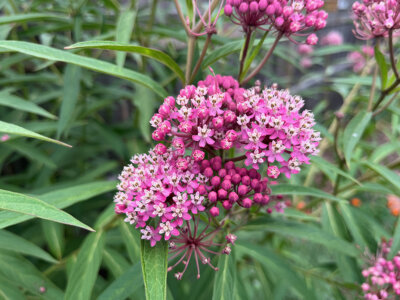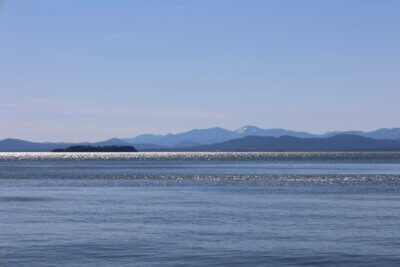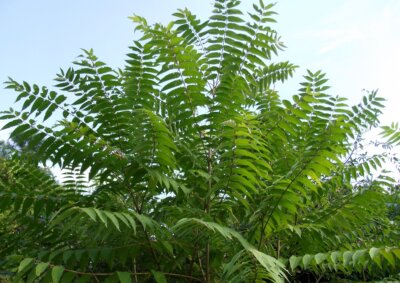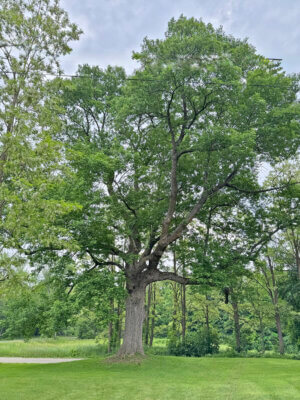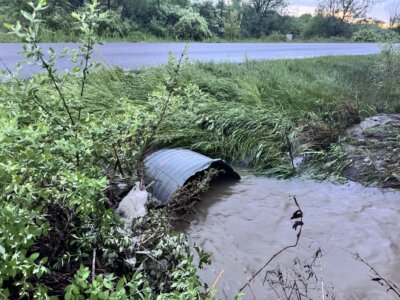A tree falls and forest succession hears it
Forests are dynamic communities, defined and enriched by change. As forests change, they tend to follow a pattern called succession: a series of developmental stages, each of which follows, or succeeds, the last.
Succession begins following a large-scale — or catastrophic — disturbance. As the forest regenerates, it enters a stage known as stand initiation, becoming an early-successional forest. Early-successional forests are defined by an incredible diversity of trees as well as a variety of shrubs and plants which provide habitat for wildlife species from pollinators to birds, bats and black bears.
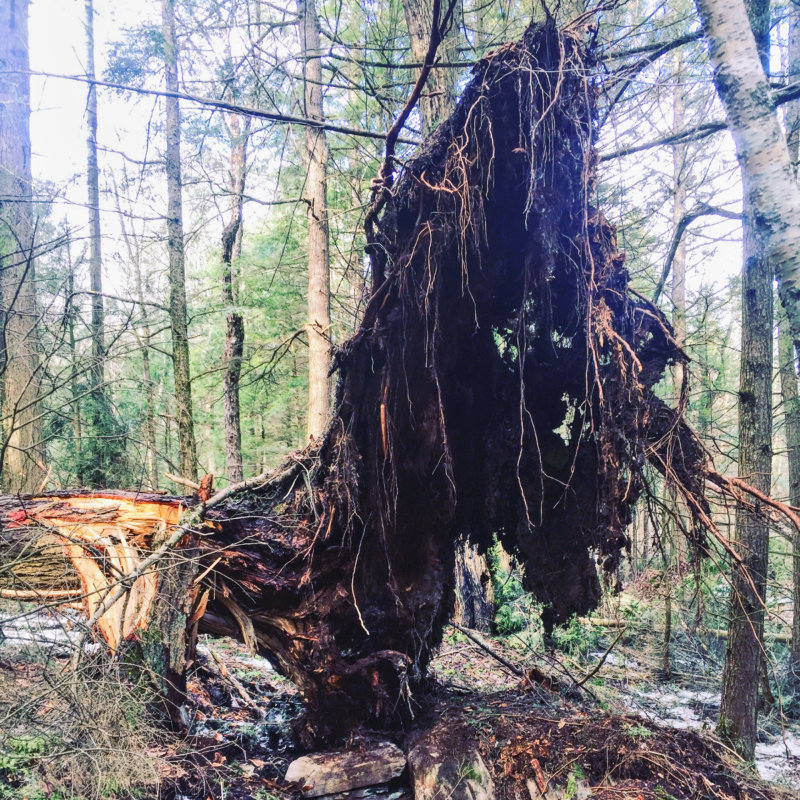
A fallen hemlock tree in Westford.
After 20-30 years, trees rise above the shrubs and the plants of the early-successional forest. As these trees grow, their crowns knit together and the canopy closes, casting the understory in deep shade. The forest enters stem exclusion, a stage of succession characterized by a single generation of trees engaged in intense competition with one another.
Depending on the species that comprise this initial generation of trees, stem exclusion can last anywhere from around 20 years to well over a century. As the trees in the forest’s overstory get older and taller, and as they begin to decline and die, light is finally allowed to reach the forest floor again. A new generation of trees, usually of more shade-tolerant species, establishes in the understory, marking the beginning of the understory re-initiation stage.
Following understory re-initiation, the forest slowly and inevitably goes haywire. Through tree mortality and natural disturbances, generations of trees establish and grow, and the forest reshapes itself again and again. Over time, the forest becomes diverse and complex, with many different sizes and ages of trees, some large, old trees and a patchy, irregular canopy. Over decades — but more commonly centuries — the forest passes into late-succession, a stage of forest development which is sometimes called old growth.
In truth, succession is not a straight line — it is a cycle that forests pass through again and again, with many detours and false-starts along the way. While it is tempting to think of late-successional forests as the endpoint, pinnacle or climax of forest development, each stage of succession is normal and natural. Over millennia, the tens of thousands of species that comprise our forest communities have adapted to every stage of forest development, from early-succession to late-succession. A vibrant and resilient landscape is not a monolith, but rather a diverse mosaic of forests of all different ages and types and expressions. Each stage of succession is vital, and none is a means to an end.
As a result of Vermont’s land use history, nearly all of our forests are just 60-100 years old, still at the early stages of succession. As they try to move forward, and to regain the diversity and complexity that once defined them, forests are confronted with an array of threats and stressors — including non-native invasive plants, pests and pathogens, the loss or functional-loss of native species, altered disturbance regimes, and a climate which is changing in unpredictable ways — all of which threaten forests’ vitality, their biodiversity, and their resilience. As comforting as it would be to believe that a forest will naturally proceed down the road of succession, it is increasingly clear that we will not protect our forests and our biodiversity solely through inaction. We cannot afford to do nothing.
So, what can we do? There is no single solution. Protecting existing old growth forests and allowing some forests to be relatively unmanaged are important tools in our toolkit, but will not address all of these issues. We must take radical action, both within individual forests and across our landscape, to simultaneously address the legacies of the past, the realities of the present and the uncertainty of the future. Forest management can help forests build diversity, complexity and resilience and create habitats — like early-successional forests — for wildlife species of concern. None of these strategies will be effective unless we also act to control threats and stressors like climate change, non-native invasive plants, deer overabundance, deforestation and forest fragmentation.
As always, forests challenge us to embrace nuance and complexity, to form a more expansive vision of what a forest is and what it means to care for it. As forest stewards, our job is not just to protect the trees in our forests but to protect and to celebrate how they change.
(Ethan Tapper is the Chittenden County Forester for the Vermont Department of Forests, Parks and Recreation. See what he’s been up to, check out his YouTube channel, sign up for his eNews and read articles he’s written here.)
Related Stories
Popular Stories
If you enjoy The Charlotte News, please consider making a donation. Your gift will help us produce more stories like this. The majority of our budget comes from charitable contributions. Your gift helps sustain The Charlotte News, keeping it a free service for everyone in town. Thank you.
Andrew Zehner, Board Chair



